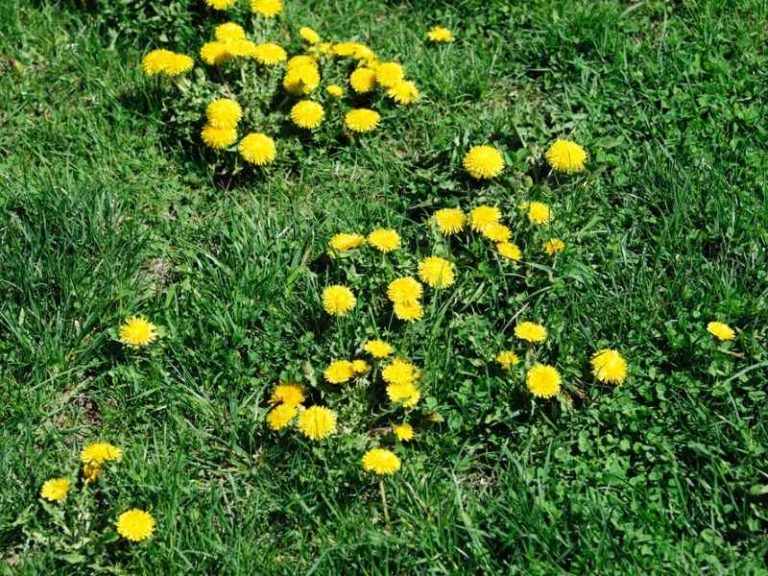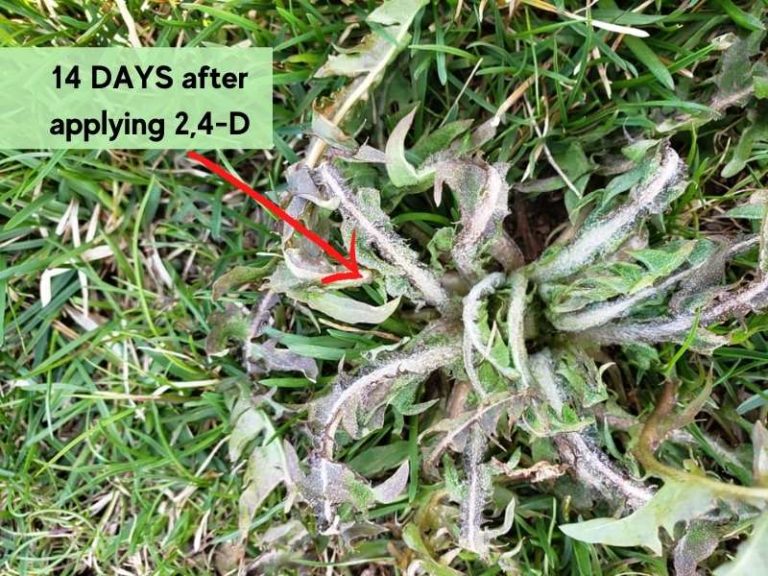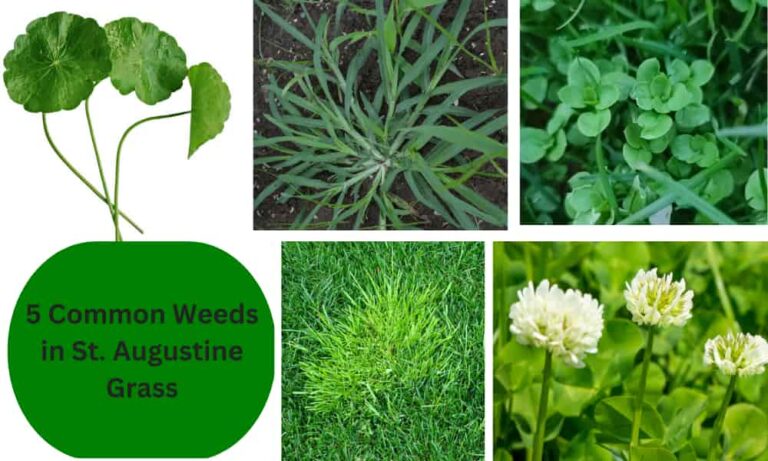How to Get Rid of Dallisgrass: Natural Control + Dallisgrass Killers
Dallisgrass weed is invasive and can choke out turfgrass on your lawn if left uncontrolled. It grows to form clumps on the lawn. These clumps destroy the attractive natural appearance of turfgrass. There are natural control methods and chemicals to kill dallisgrass.
Can you kill dallisgrass without killing the grass?
You can kill dallisgrass without killing the nearby turfgrass by applying a selective post-emergent herbicide that controls the grassy weed such as Celcius 68WG. This herbicide is safe to use on most lawns including St. Augustine grass and centipedegrass.
When using the herbicide as a spot treatment, apply it at a rate of 0.085-0.1130z per gallon of water without mixing with other types of post-emergent herbicides to prevent turf injury.
How to kill dallisgrass
Dallisgrass is used as forage grass for livestock but becomes a weed when growing on the lawn. It’s grayish-green and clumpy, thus destroying your lawn’s lush, green, healthy appearance.
There are both natural and chemical methods to get rid of this weed from the lawn.
1. Dig out dallisgrass from your lawn
Dallisgrass has a deep fibrous root system with underground rhizomes which reproduce seeds for dispersal. To prevent the rhizomes from producing more seeds and spreading to other lawn parts, dig out dallisgrass when still young.
Water your lawn enough to make it slightly wet then dig up and remove the dallisgrass to the root. If the weed is established dallisgrass, dig them out in summer using a shovel and let the rhizomes dry so they don’t reproduce. After digging out all the weeds, cover the area with thick mulch to prevent their seeds from regrowing. Replace the holes with new sod or plant the same grass seeds types.
Digging is also effective where the weed covers a tiny section of the lawn. Though effective, digging requires mechanical energy and can be tiresome.
2. Maintain a healthy lawn to choke out dallisgrass
When your lawn is healthy, turfgrass becomes competitive and dallisgrass will have no chance to grow on such a lawn. To maintain a healthy yard, apply fertilizers following a proper schedule for your turfgrass to boost nutrient supply, mow the lawn lower between 3-4 inches for cold season grasses, and water the lawn area weekly.
Here are a few more tips to keep your lawn healthy and control dallisgrass:
- Fill bare spots with sod, plant or overseed with a new seed of the same turf type to maintain a thick lawn that chokes out weeds.
- Trim the canopy above your lawn to improve aeration and encourage healthier turf.
- Aerate your lawn regularly and improve drainage site and prevent dallisgrass from thriving.
Healthy lawns have denser, thick grasses leaving no space for dallisgrass seeds to grow and emerge. Keeping your lawn healthy prevents the weed from growing in the area.
3. Overseed to discourage dallisgrass
Overseeding increases the population of grass in your lawn which discourages dallisgrass from growing. When you plant many turfgrass seeds, the weed won’t get space to grow its roots and spread to other lawn areas through seed dispersal.
Inspect lawn areas with bare spaces or little grasses and plant more seeds in them. Overseeding allows the desired turf to populate the lawn, leaving no room for dallisgrass to grow.
4. Bag grass clippings when mowing
Dallisgrass produces seeds which humans, pests, or equipment carry away from one place to another. Avoid contaminating other lawn areas with the grass to avoid spreading it. For example, I recommend bagging grass clippings if you have weeds like dallisgrass. If you used a mower to cut a lawn invaded with dallisgrass, clean it before using it on new, uncontaminated lawns.
Avoid using soils previously used to grow dallisgrass pasture when replacing bare spots on lawns with fresh grass. The soils might be having the seeds of the weeds and will soon germinate.
In addition, if you’re buying a new sod, check it to ensure it doesn’t have traces of any dallisgrass on it. If it does, the grass would germinate and spread to other parts of your lawn.
5. Spray vinegar on dallisgrass
White vinegar is a non-selective home remedy you can use to kill dallisgrass and other lawn weeds to the root. I prefer it because it’s eco-friendly and nontoxic, but it is only practical if you’re dealing with small areas of weed invasion.
Home-made vinegar has a 5% concentration of acetic acid which is why it’s suitable to kill small patches of young dallisgrass weeds in your lawn. Horticultural vinegar will be the most appropriate where the weed has firmly established because it has a 30% acetic acid concentration. The acetic acid in vinegar kills the weeds.
To kill dallisgrass in lawns using white vinegar, get a spray bottle with a tiny nozzle, 5% concentrated white vinegar and a dish soap solution. Here’s how to kill dallisgrass with vinegar:
- Add two teaspoons of soap solution in one gallon of vinegar.
- Stir to mix the soap and vinegar into a uniform solution.
- Spray the resulting solution on the dallisgrass weeds and at the top of the roots.
- Repeat the application to kill dallisgrass completely especially if there are any young shoots of the weed remaining after the first application.
Soap solution is very important in this remedy as it breaks the cuticle of the dallisgrass weed for the vinegar to stick and work more effectively. Vinegar will kill the weeds from 24-48 hours. I recommend spraying the vinegar on a sunny day for the sun to activate it.
Note: Dilute horticultural vinegar with water to make it less harsh. Always wear protective clothing like goggles, face masks, and gloves when handling horticultural vinegar. In case of any burns on the surrounding lawn grass, replace the patches with new sod or apply a good top dressing then spread grass seed to amend the lawn.
6. Apply a dallisgrass killer herbicide
Applying herbicides is the most effective way to get rid of dallisgrass. However, herbicides don’t entirely eliminate dallisgrass with a single application but suppress the wee. However, with a minimum of 3 applications of a dallisgrass killer annually, you can control the weed and eradicate it from your lawn permanently.
Make the first application of dallisgrass killer in the fall when the average temperature for three consecutive days is below 72oF. The second and third applications should be made after 4-6 weeks when dallisgrass begins to regrow.
Leave the grass unmowed for two weeks before applying herbicides for the first time for more foliage coverage.
Three types of herbicides used to kill dallisgrass on lawns are:
Pre-emergent herbicides
Pre-emergent herbicides are applied before dallisgrass emerges on the lawn. They are used to prevent weeds from growing but they don’t kill firmly established weeds. They are best applied in early spring or late winter before dallisgrass seeds germinate. Examples of effective pre-emergent herbicides are Oryzalin and Nanpropamide.
- Spray the lawn with the mixture using the nozzle in the tank sprayer.
- Irrigate the lawn area thoroughly upto a half-inch of water to ensure the herbicide soaks deeply into the soil to act on dallisgrass rhizomes and roots.
Pro tip: To completely prevent dallisgrass from emerging, apply pre-emergent herbicide three times. Make the first application before the weeds germinate and emerge from the soil.
Post-emergent herbicides
Post-emergent herbicides kill dallisgrass after germination. These herbicides can be selective or non-selective. Depending on the infestation, you might want to choose between contact and systemic. While contact herbicides kill weed parts it comes into contact with only, systematic herbicides kill the entire weed system.
Post-emergent herbicides can be in granular form or spray formulas. For best results, apply these herbicides in early to late Fall, when dallisgrass is actively growing.
Examples of great post-emergent herbicides are MSMA and Foramsulfuron (Revolver 0.19SC). Apply both herbicides as spot treatments if you have small areas of invasion in your lawn.
7. Spot treatdallisgrass with glyphosate (Roundup)
Glyphosate herbicides are non-selective, so, take maximum caution to avoid harming the nearby turfgrass. They are best applied to lawns when turfgrass is dormant, but dallisgrass leaves are green and actively growing. Glysophate herbicides like Roundup work perfectly by killing the entire dallisgrass system.
Apply glyphosate herbicides carefully as a spot treatment on dallisgrass. The application rates vary from each type of glyphosate herbicide, be sure to check the rate before applying it.
After application, cut and remove the brown spots. Replace any bare spots in the lawn these herbicides create with new sods or plant new seeds of the same turf type to prevent future re-infestation.
Can you pull dallisgrass?
You cannot pull dallisgrass from the soil using your hands because it has a thick, deep fibrous root system. These roots can extend up to 1 meter deep into the soil, making it difficult to pull out the weed with bare hands. Even if you do, the roots or rhizomes will remain in the soil and regrow over time.
If you have to pull them, use a shovel to dig them out or try using a weed puller like the one you’d use for crabgrass removal.
References
- University of Maryland Extension: Dallisgrass.
- Alabama A&M Auburn Universities: Removing the Impossible Dallisgrass and Wild Violets.

![Killing Crabgrass With Baking Soda [Homemade Killer With Pictures]](https://lawnmodel.com/wp-content/uploads/2020/11/Baking-soda-crabgrass-killer-homemade-768x546.jpg)



